Refine search
Actions for selected content:
8126 results in Fluid dynamics and solid mechanics
4 - Dispersive waves and ray tracing
- from Part I - Fluid Dynamics and Waves
-
- Book:
- Waves and Mean Flows
- Published online:
- 29 March 2010
- Print publication:
- 20 August 2009, pp 53-94
-
- Chapter
- Export citation
Frontmatter
-
- Book:
- Waves and Mean Flows
- Published online:
- 29 March 2010
- Print publication:
- 20 August 2009, pp i-vi
-
- Chapter
- Export citation
9 - Rossby waves and balanced dynamics
- from Part II - Wave–Mean Interaction Theory
-
- Book:
- Waves and Mean Flows
- Published online:
- 29 March 2010
- Print publication:
- 20 August 2009, pp 186-203
-
- Chapter
- Export citation
2 - Linear waves
- from Part I - Fluid Dynamics and Waves
-
- Book:
- Waves and Mean Flows
- Published online:
- 29 March 2010
- Print publication:
- 20 August 2009, pp 21-37
-
- Chapter
- Export citation
Part I - Fluid Dynamics and Waves
-
- Book:
- Waves and Mean Flows
- Published online:
- 29 March 2010
- Print publication:
- 20 August 2009, pp 1-2
-
- Chapter
- Export citation
11 - Zonally symmetric GLM theory
- from Part II - Wave–Mean Interaction Theory
-
- Book:
- Waves and Mean Flows
- Published online:
- 29 March 2010
- Print publication:
- 20 August 2009, pp 249-258
-
- Chapter
- Export citation
8 - Three-dimensional rotating flow
- from Part II - Wave–Mean Interaction Theory
-
- Book:
- Waves and Mean Flows
- Published online:
- 29 March 2010
- Print publication:
- 20 August 2009, pp 171-185
-
- Chapter
- Export citation
14 - Wave refraction by vortices
- from Part III - Waves and Vortices
-
- Book:
- Waves and Mean Flows
- Published online:
- 29 March 2010
- Print publication:
- 20 August 2009, pp 317-334
-
- Chapter
- Export citation
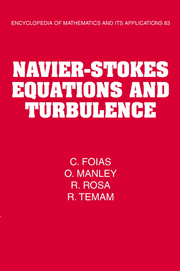
Navier-Stokes Equations and Turbulence
-
- Published online:
- 14 August 2009
- Print publication:
- 27 August 2001
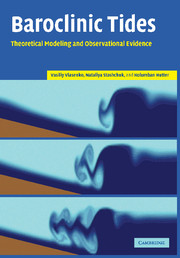
Baroclinic Tides
- Theoretical Modeling and Observational Evidence
-
- Published online:
- 14 August 2009
- Print publication:
- 14 July 2005

Prediction of Turbulent Flows
-
- Published online:
- 12 August 2009
- Print publication:
- 08 June 2005
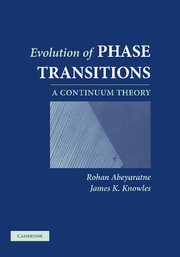
Evolution of Phase Transitions
- A Continuum Theory
-
- Published online:
- 12 August 2009
- Print publication:
- 08 May 2006
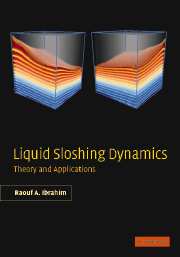
Liquid Sloshing Dynamics
- Theory and Applications
-
- Published online:
- 11 August 2009
- Print publication:
- 19 May 2005
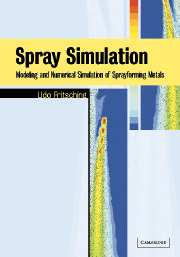
Spray Simulation
- Modeling and Numerical Simulation of Sprayforming metals
-
- Published online:
- 10 August 2009
- Print publication:
- 26 February 2004
5 - Co-rotating beam elements
-
- Book:
- Non-linear Modeling and Analysis of Solids and Structures
- Published online:
- 05 June 2012
- Print publication:
- 06 August 2009, pp 100-144
-
- Chapter
- Export citation
Index
-
- Book:
- Non-linear Modeling and Analysis of Solids and Structures
- Published online:
- 05 June 2012
- Print publication:
- 06 August 2009, pp 345-349
-
- Chapter
- Export citation
Preface
-
- Book:
- Non-linear Modeling and Analysis of Solids and Structures
- Published online:
- 05 June 2012
- Print publication:
- 06 August 2009, pp ix-x
-
- Chapter
- Export citation
8 - Numerical solution techniques
-
- Book:
- Non-linear Modeling and Analysis of Solids and Structures
- Published online:
- 05 June 2012
- Print publication:
- 06 August 2009, pp 256-289
-
- Chapter
- Export citation
7 - Elasto-plastic solids
-
- Book:
- Non-linear Modeling and Analysis of Solids and Structures
- Published online:
- 05 June 2012
- Print publication:
- 06 August 2009, pp 189-255
-
- Chapter
- Export citation
6 - Deformation and equilibrium of solids
-
- Book:
- Non-linear Modeling and Analysis of Solids and Structures
- Published online:
- 05 June 2012
- Print publication:
- 06 August 2009, pp 145-188
-
- Chapter
- Export citation
